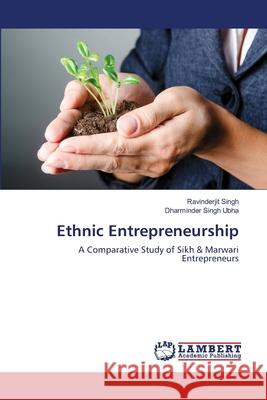Ethnic Entrepreneurship » książka
Ethnic Entrepreneurship
ISBN-13: 9783659476396 / Angielski / Miękka / 2013 / 252 str.
One of the areas of ethnic entrepreneurship research which remain untouched in multi-ethnic country like India is to investigate the role of one ethnic group as compared to other ethnic group in the field of entrepreneurship. In India, some ethnic groups are very successful but some ethnic groups are not so successful. In 1997, fifteen out of twenty largest industrial houses were from Vaishya trading castes and out of these eight were Marwaris. Presently, Marwaris are spectacularly successful in the field of business. On the other hand, Sikhs, who are considered very enterprising and mainly take up agricultural industrial labour activities, are reasonably successful in the field of business. But they are not as successful as Marwaris are. Despite the fact that both of these communities share certain features such as middle caste status and dominant caste position and both have performed differently in home country as well as in foreign countries. In this book, a comparative analysis of the both ethnic groups has been made in order to find out the causes and reasons of their differential performance.
One of the areas of ethnic entrepreneurship research which remain untouched in multi-ethnic country like India is to investigate the role of one ethnic group as compared to other ethnic group in the field of entrepreneurship. In India, some ethnic groups are very successful but some ethnic groups are not so successful. In 1997, fifteen out of twenty largest industrial houses were from Vaishya trading castes and out of these eight were Marwaris. Presently, Marwaris are spectacularly successful in the field of business. On the other hand, Sikhs, who are considered very enterprising and mainly take up agricultural industrial labour activities, are reasonably successful in the field of business. But they are not as successful as Marwaris are. Despite the fact that both of these communities share certain features such as middle caste status and dominant caste position and both have performed differently in home country as well as in foreign countries. In this book, a comparative analysis of the both ethnic groups has been made in order to find out the causes and reasons of their differential performance.











